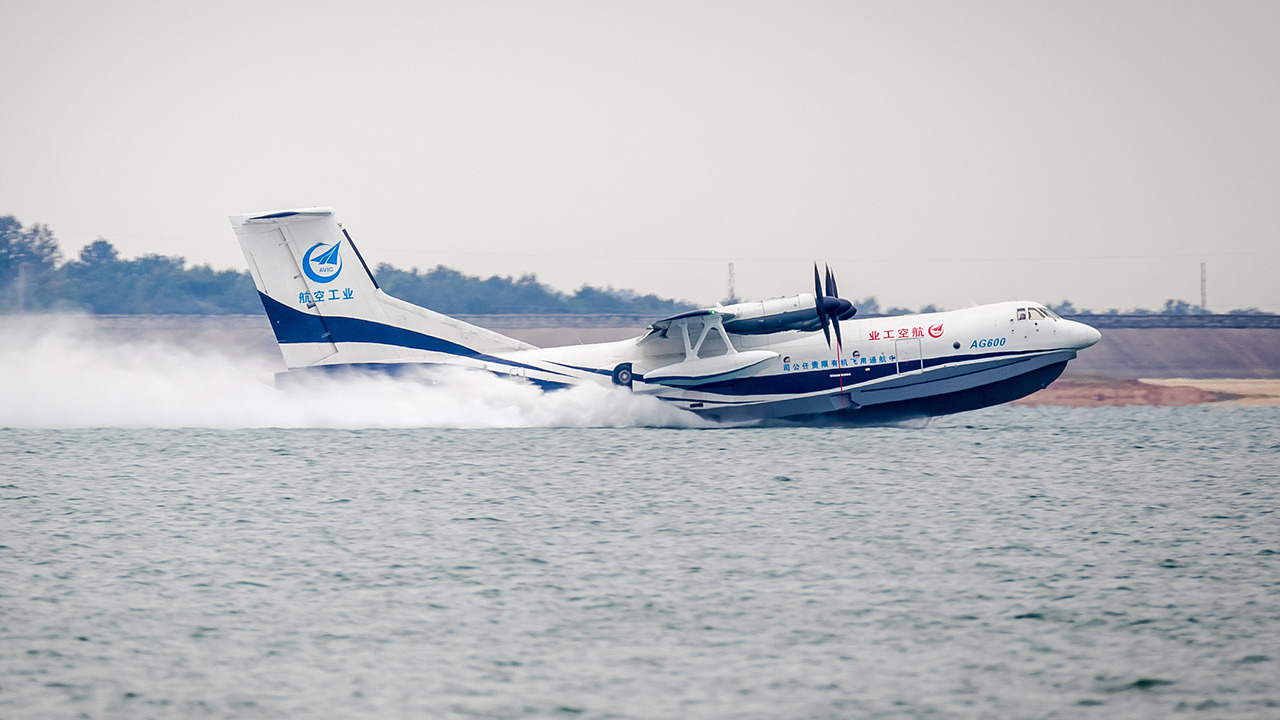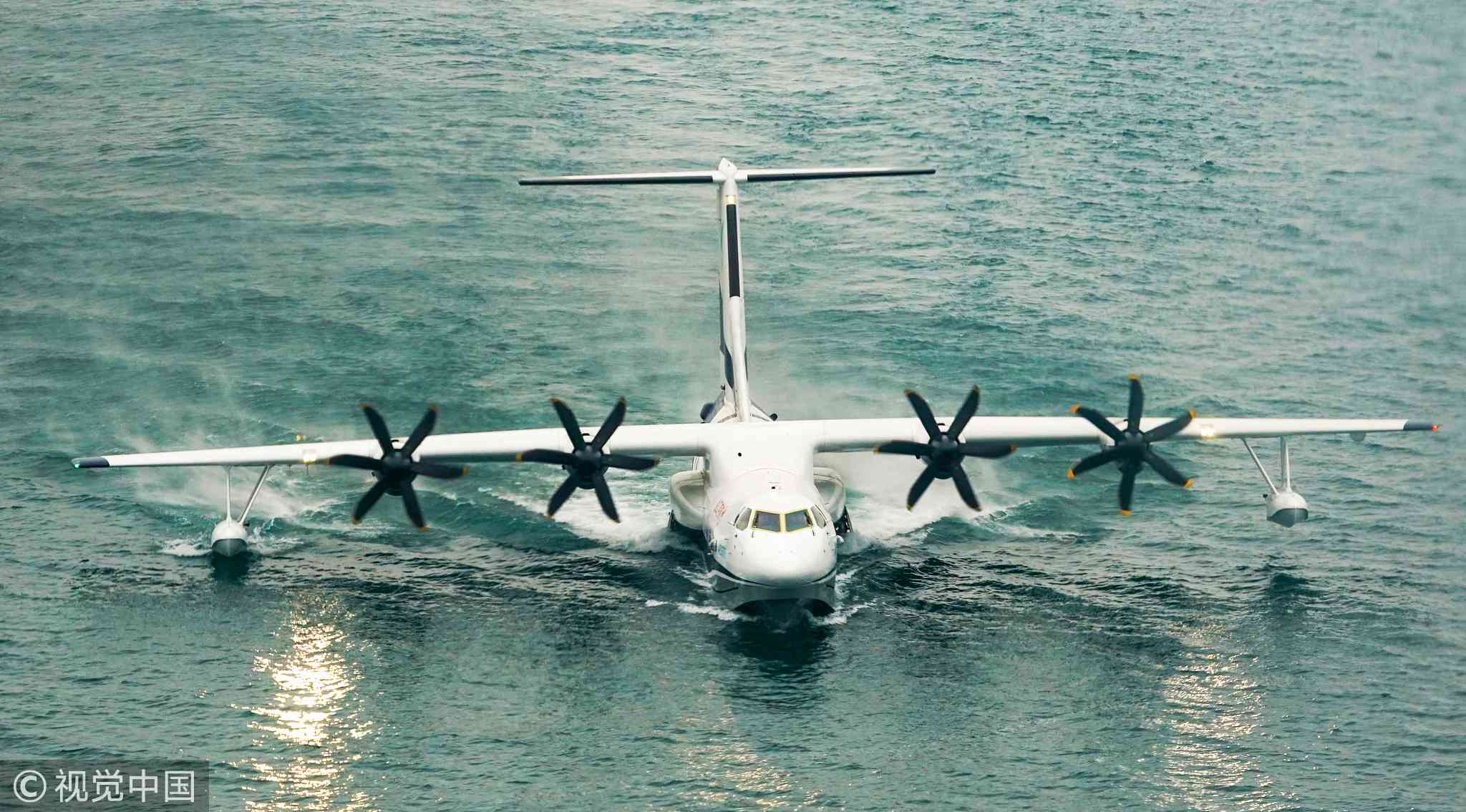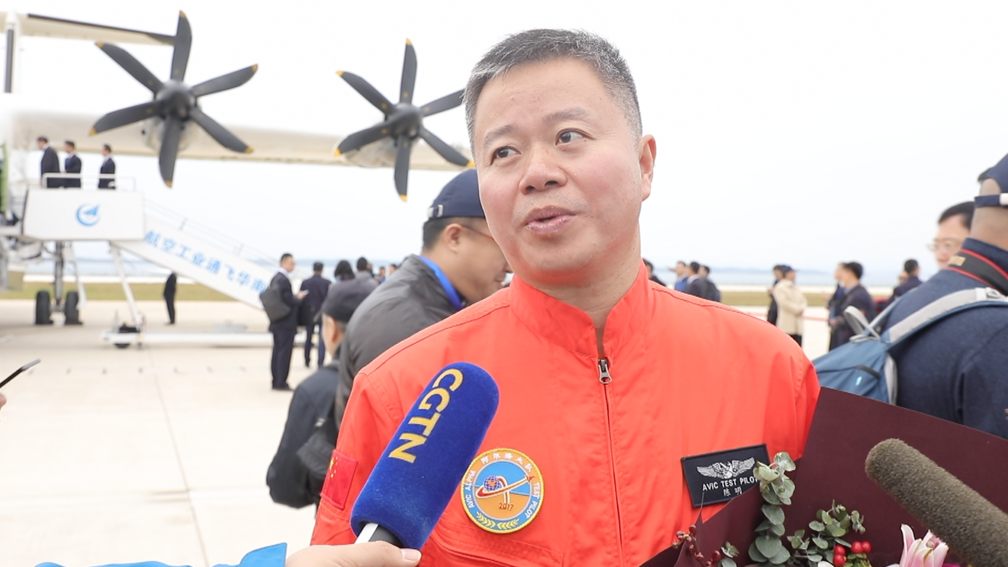
Aviation
10:29, 20-Oct-2018
AG600 completes first water takeoff: How difficult to build an amphibious aircraft?
Updated
10:01, 23-Oct-2018
By Ning Hong, Guo Meiping
01:03

China's independently-developed large amphibious aircraft AG600 completed its first water surface test flight on Saturday in Jingmen of central China's Hubei Province.
This is another breakthrough in China's aviation industry. The AG600, codenamed Kunlong, is designed to be the world's largest amphibious aircraft. It completed its maiden flight in December 2017.
With a 38.8-meter wingspan, it can take off from the land and water and has a maximum weight of over 53 tons.

CGTN Photo
CGTN Photo
From marine to amphibious
As the first of its kind in the country, AG600 was designed based on the Harbin SH-5 maritime bomber, a marine aircraft developed in 60s and 70s. However, the evolution from being marine to amphibious came with an almost impassable technological gap.
"We need to ensure both functions of aerodynamics and hydrodynamic force, integrating the features of an aircraft and ship. It requires us to coordinate the overall layout as well as aerodynamics and hydrodynamic layouts," said Huang Lingcai, the chief designer of the AG600.

China's amphibious aircraft AG600 completed first water surface test flight on Saturday in Jingmen of central China's Hubei Province. /VCG Photo
China's amphibious aircraft AG600 completed first water surface test flight on Saturday in Jingmen of central China's Hubei Province. /VCG Photo
It's also a big challenge to balance the speed and feasibility.
"We want a fast-speed for the aircraft. However, to ensure a small water-load and strong wave-resistance, we need to slow it down," said Huang. "Breakthroughs were made in the calculation and analysis, as well as in testing the air-water coupling model, filling a gap in China."
The designers also developed a plate on the lower part of AG600 to suppress waves which would otherwise spit up into the engine propeller and flap. With this installed, the AG600 can ensure smooth navigation on the water.

Chen Ming, co-pilot of AG600. /CGTN Photo
Chen Ming, co-pilot of AG600. /CGTN Photo
Taking off on water is tougher on the structure of the plane and the skill of the pilots too.
"It is more difficult to take off on water than on land, especially on the shock resistance of the plane," Chen Ming, co-pilot of AG600, told CGTN.
Fire extinguisher and maritime rescuer
With a capacity of 50 people for search-and-rescue missions, the AG600 can collect 12 tons of water in 20 seconds and carry it up to 50 meters above the ground, and it can extinguish a fire in an area of over 4,000 square meters with one spray.
The ability to take off and land on complex sea environments makes the AG600 highly efficient for maritime rescue missions.
With top cruising speeds of 500 kilometers per hour – over 10 times that of a salvage ship – and a flight time of up to 12 hours, the plane has the endurance to carry out rescue operations under extreme weather conditions, and resist two-meter-high waves.
Its maximum rescue operation radius extends to 1,600 kilometers, which could cover most of China's sea areas and exclusive economic zones.
"The current sea rescue is mainly conducted by vessels, and a limited number of helicopters and fixed wing aircrafts. The emergency rescue mechanism, equipment and professional crew all needs further enhancement,” said Lu Guangshan, chief engineer of Aviation Industry Corporation of China. "The AG600 is a step towards addressing the needs of both the maritime economy and forest firefighting. It could also boost China's middle and long-range emergency sea rescue abilities.”
The AG600 could be also used for other purposes, such as marine environmental monitoring and transportation, as well as for tourism as the high cruising speed and large flight range would allow the aircraft to work as an "airbus," carrying tourists between airports and islands.
It is estimated that the market need, both domestically and overseas, for China's AG600 model could reach 280 planes.
(CGTN's Gao Yun also contributed to this story.)

SITEMAP
Copyright © 2018 CGTN. Beijing ICP prepared NO.16065310-3
Copyright © 2018 CGTN. Beijing ICP prepared NO.16065310-3